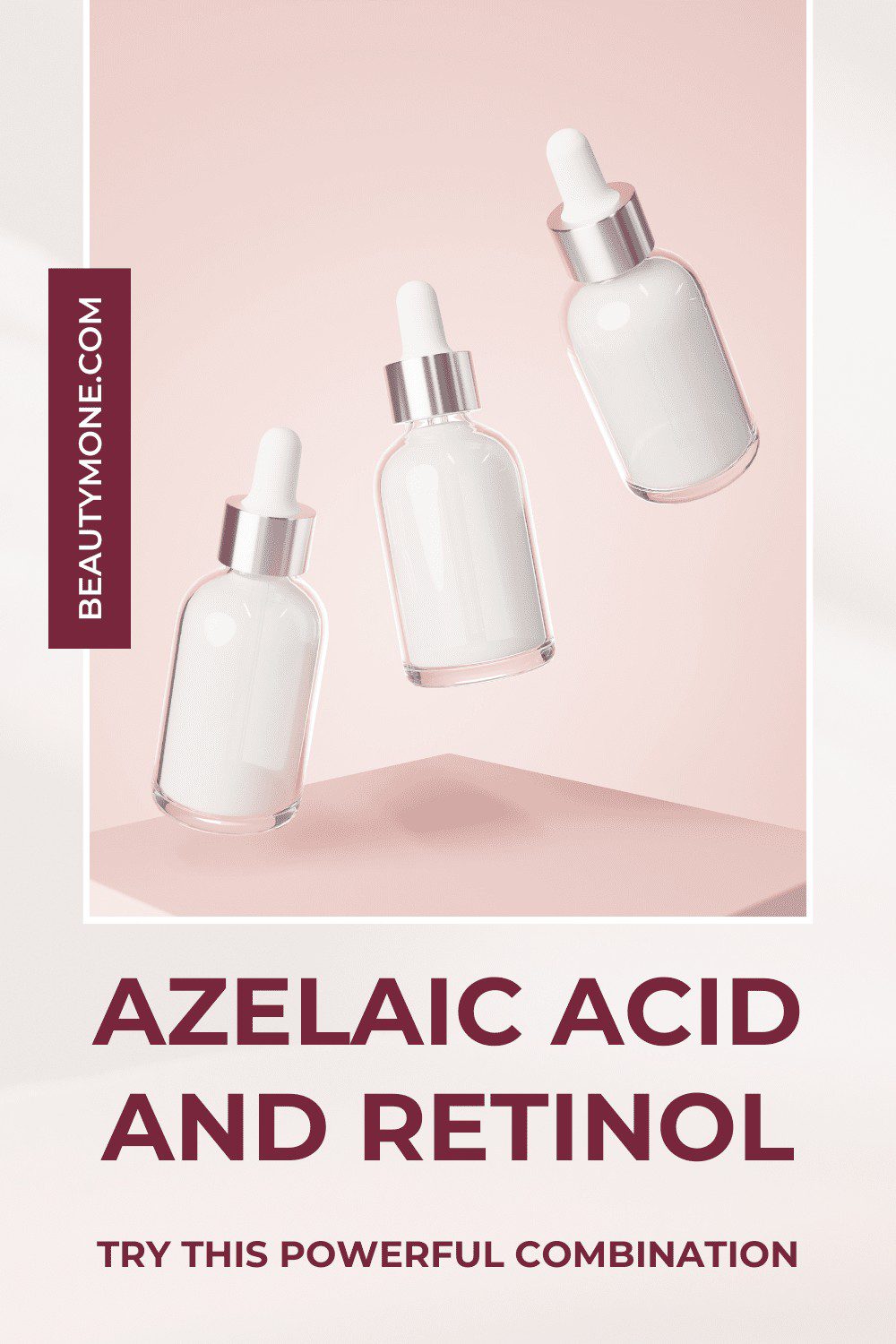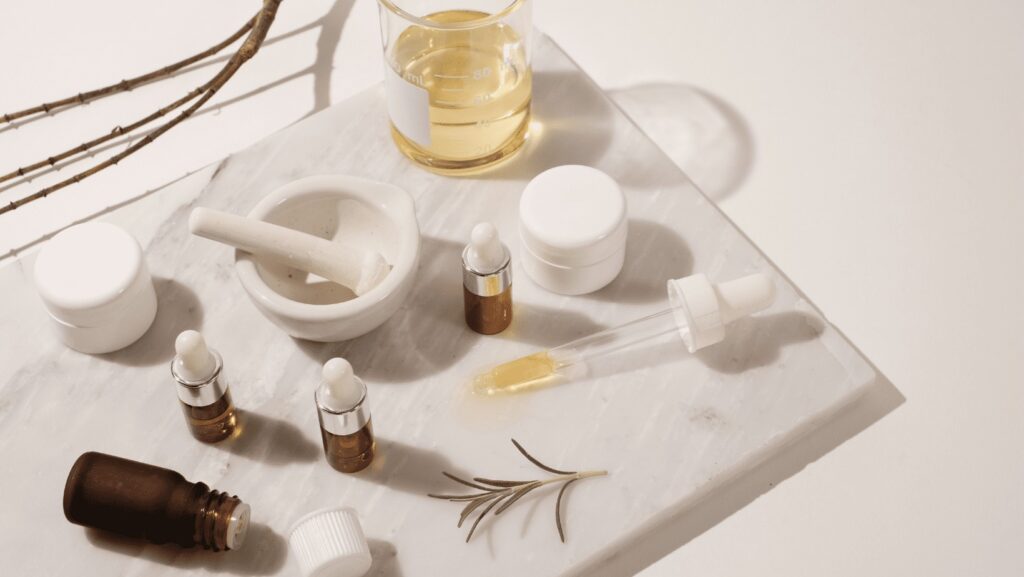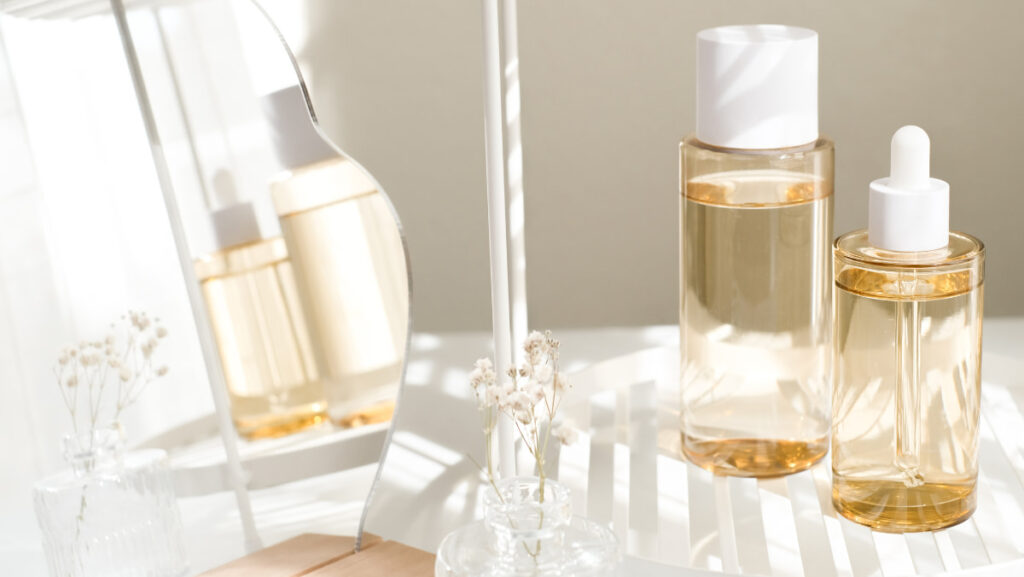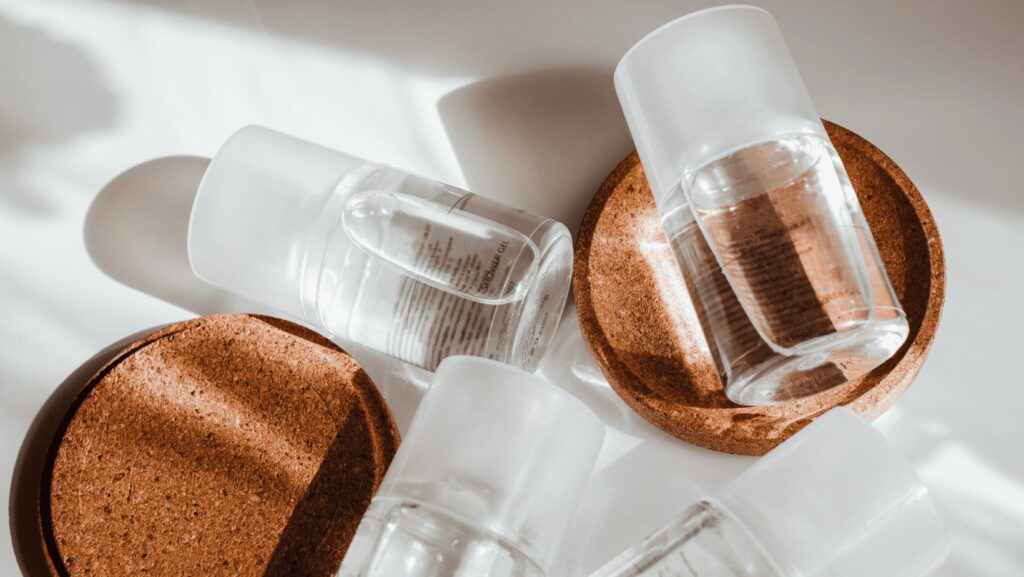
Have you ever felt like you’re waging a losing battle against your skin? Or you looked in the mirror and noticed a huge zit in the middle of your forehead. Talk about a mood killer!
As someone who struggled with acne and hyperpigmentation for years, I know the feeling all too well. But fear not – there’s hope in the form of azelaic acid and retinol!
These two ingredients may sound like something straight out of a chemistry lab, but trust me, they’re the secret weapons you need to achieve the flawless complexion of your dreams.
In this article, we’ll dive into everything you need to know about azelaic acid and retinol and explore their many benefits. Can you use azelaic acid and retinol together? This is probably one of the questions you have; I promise we’ll answer that!
Moreover, I’ll share my personal experience with these ingredients and the amazing results they’ve helped me achieve. So buckle up – it’s time to unleash the power of azelaic acid and retinol and take your skin to the next level!
Can You Use Retinol And Azelaic Acid Together?
Yes, you can use retinol and azelaic acid together!
At least from my experience, if you follow the right regime, there’s no harm in using the two. I’ve noticed that they even work better whenever I combine them.
According to this research, you’ll observe an enhanced azelaic acid efficacy when combined with retinoids to treat acne scars and acne. Moreover, their combination is handy for improving hyperpigmentation.
Having said that, as we have already established, azelaic acid and retinol achieve different results on the skin. While both help with cellular turnover, azelaic acid is a handy exfoliant. It helps with inflammation and bacteria. Retinol, on the other hand, boosts cell renewal.
Even though both can lead to skin irritation, retinol has extra side effects such as photosensitivity and dry skin.

How Azelaic Acid And Retinol Work Together
When it comes to understanding how azelaic acid and retinol complement each other, think of them as teammates working towards a common goal – improving your skin health.
Retinol, known for its anti-aging properties, works by speeding up cell turnover. This means it helps slough off dead skin cells more quickly, allowing new ones to surface faster.
On the flip side, azelaic acid possesses antibacterial properties and is an ace at reducing inflammation. It helps in keeping those pesky breakouts at bay while calming any existing redness or irritation.
When used together with retinol—voila! They form a dynamic duo tackling multiple skin concerns simultaneously.
Benefits of Using Retinol With Azelaic Acid
Now that we’ve got an idea about how these ingredients work hand-in-hand let’s chat about their combined benefits:
- Improved Skin Texture: By increasing cell turnover and decreasing inflammation simultaneously.
- Reduced Breakouts: Thanks to azelaic acid’s ability to keep bacteria under control.
- Less Hyperpigmentation: Both compounds help fade dark spots over time.
Remember, though, that consistency is key when using these products!
Potential Side Effects Of Mixing Azelaic Acid And Retinol
Like any potent skincare ingredients, though, there might be potential side effects when using both retinol and azelaic acid together.
Some common side effects include redness, peeling, or dryness, particularly at the start of treatment. If these symptoms persist, it’s time to have a chat with your healthcare provider.
More severe side effects like hives or swelling are rare, but if they do occur – stop use immediately and seek medical attention.
What Is Azelaic Acid: Its Benefits & Side-Effects
Azelaic acid is a dicarboxylic acid found in grains like wheat, rye, and barley. It’s known for its ability to inhibit tyrosinase enzymes – this enzyme is responsible for the production of melanin (the pigment that gives your skin its color).
When used topically, this powerhouse ingredient helps reduce pigmentation and brighten up your complexion.
Azelaic works similarly to alpha-hydroxy acids (AHAs) and beta-hydroxy acids (BHAs) but with less irritation – making it perfect for those with rosacea-prone skin!
Generally, even the most sensitive skin can tolerate azelaic acid. The fact that it has a comedogenic ingredient means it does not contribute to acne breakouts.
It not only works by killing bacteria but also opening up clogged pores. Moreover, it brings with it antioxidant attributes that are efficient at protecting the skin from forming free radicals that lead to inflammation, further damaging the skin.
It is available in many forms, including creams, gels, and foams. Some of the benefits of azelaic acid include the following:
- Reducing post-inflammatory hyperpigmentation
- Reduces the appearance of melasma
- Treats rosacea
- Handy in treating acne
But what about the potential side effects of azelaic acid? Like any skincare product, azelaic acid isn’t without potential drawbacks. Some users may experience mild itching, mild stinging, or tingling upon application, but don’t fret; these reactions are usually temporary and tend to subside as your skin adjusts to the product.
As for more serious side effects like severe redness or peeling – they’re pretty rare, but if such symptoms persist after several uses, then perhaps it’d be best to consult a dermatologist before continuing further use.
Here are my favorite azelaic acid skincare products for you to try:
- Paula’s Choice 10% Azelaic Acid Booster: This booster visibly fades brown spots caused by sun damage, works to reduce breakouts, and diminishes red marks from past blemishes.
- The Ordinary Azelaic Acid Suspension 10%: A multi-functional formula great for those looking for solutions for dullness, uneven tone, and textural irregularities.
- The Inkey List SuperSolutions 10% Azelaic Serum Redness Relief Solution: By reducing the appearance of redness and an uneven skin tone, this anti-redness serum gives the skin a more even complexion and instantly soothes and calms skin that feels irritated.
- Drunk Elephant Bouncy Brightfacial Brightening Mask with 10% Azelaic Acid + 1% Salicylic Acid: A radiance-boosting leave-on mask that clarifies uneven tone, fades stubborn spots, and reduces the look of redness, revealing a brighter, more even complexion.
- FaceTheory Lumizela Azelaic Acid Serum A10: A plant-based serum formulated containing Colloidal oatmeal, aloe vera, and green tea for an extra antioxidant boost.
- Skinfix Acne+ 2% BHA + Azelaic Acid + Niacinamide + AHA Cleanser: A multi-level pore resurfacing, deep pore, and acne-fighting cleanser helps reduce blemish size, redness and excess oil while minimizing sebum production.
- Farmacy Brighten Up 3% TXA Dark Spot Toner with Azelaic Acid: This brightening toner is clinically proven to fade dark spots for a bright, even complexion.
- Paula’s Choice Clear Skin Clearing Treatment: The triple-action formula works to prevent blemishes, fade post-breakout marks, and soothe redness. Minimises enlarged pores, while anti-aging ingredients smooth skin’s texture and improve skin tone.

What Is Retinol: Its Benefits & Side-Effects
Retinol, on the other hand, is a type of retinoid – a group of compounds extracted from vitamin A. Retinol isn’t just any old ingredient; it’s a powerhouse when it comes to boosting collagen production and accelerating skin cell turnover.
The result? A reduction in the appearance of fine lines, wrinkles, large pores, and overall healthier-looking skin.
Topical retinol products are available in different formulas like liquids, creams, and gels. Getting them over the counter is a walk in the park.
Note: Retinol isn’t the same as retinoic acid, which is a different kind of retinoid. These two boast many differences. The latter is stronger than retinol and more likely to cause side effects. Additionally, it’s available only through prescription.
Some of the benefits of retinol include the following;
- Reducing acne
- Mitigating the appearance of large pores
- Reducing spots from sun damage
- Enhances wrinkles and fine lines
- Eases psoriasis symptoms
You might experience redness or dryness as your skin adjusts to the product. There could also be an increase in sun sensitivity, so don’t forget your sunscreen!
Here are my favorite retinol skincare products for you to try:
- FaceTheory Regenacalm 2% Retinol and Vitamin C Serum S1: A serum that is formulated with retinol ester (2%), hyaluronic acid, and extracts of dill and liquorice to target fine lines, wrinkles, blemishes, acne scars, rosacea, and hyperpigmentation.
- Versed Press Restart Gentle Retinol Serum: A non-scary and effective nightly treatment that reforms skin texture (softening lines and wrinkles) and refines skin tone (evening out discoloration) while supporting healthy skin functions and keeping pores clear.
- Paula’s Choice Clinical 1% Retinol Treatment: A lightweight lotion that combines pure retinol with potent antioxidants to immediately enhance hydration, diminish the appearance of fine lines and wrinkles, and promote a more even-toned complexion.
- Augustinus Bader The Retinol Serum: Reduce the appearance of deep lines and wrinkles, blemishes, and pigmentation without irritation or redness.
- Paula’s Choice 1% Retinol Booster: This concentrated 1% Retinol Booster works to effectively improve the appearance of wrinkles, reduce pore size, and improve skin tone.
- Drunk Elephant A-Passioni Retinol Cream: A formula that combines 1.0% vegan retinol with superfood-rich ingredients to dramatically diminish the look of fine lines, deep wrinkles, and sun damage.
- The Inkey List Retinol Serum: Specially formulated with a slow-release, less irritating form of Retinol, the skin-renewing serum targets the first signs of aging and hyperpigmentation. Working to improve the appearance of fine lines, wrinkles, and overall skin tone and texture.
How To Use Azelaic Acid And Retinol
Now that we know that it is possible to use azelaic acid and retinol together, I can imagine you still come across a couple of questions about how to use the two ingredients. Here are the most important facts and tips.
When starting out with any new product containing potent ingredients, always start slow – apply a thin layer after using a gentle cleanser on only a small area first before applying over the entire face.
You know how they say ‘slow and steady wins the race’?
How To Layer Azelaic Acid And Retinol
If you use a product containing both ingredients, you don’t have to think about how to layer them properly.
However, when using different azelaic acid products and retinols like tretinoin, start with the thinnest consistency first, then layer on as needed after cleansing with a gentle cleanser.
Do the two have similar consistency? For instance, are they both serums? If this is the case, it does not matter which one you apply first. However, you might need to introduce one product at a time to ensure your skin tolerates each well.
It is prudent to use azelaic acid two times a day while retinol once a day. Since sunlight is notorious for weakening retinol, you might need to use it only at night.
Always follow it up with a moisturizer, as retinol might cause skin dryness. On top of that, apply sunscreen as your final step in your skincare regime if you intend to get out in the sun.
Do You Use Azelaic Acid Before Or After Retinol?
Another common question that I’ve come across regarding the use of these two is, do you use azelaic acid before or after retinol? Well, from my experience, if you’re utilizing a moisturizer with an azelaic acid serum and retinol, you’d ideally utilize azelaic acid before retinol.
On the other hand, if you’re utilizing a toner featuring azelaic acid serum and retinol, you’d ideally utilize retinol before azelaic acid.
For incredible results, it is prudent to apply the one that features a thin consistency first. If both of them have a similar consistency, then the order does not matter.
When starting, I highly recommend introducing them one at a time. Utilize retinol for one month, then introduce azelaic acid – or vice versa.

Can I Use Azelaic Acid With Retinol Or Vitamin C?
Vitamin C is another superstar ingredient that has a wide range of benefits for the skin. It is a powerful antioxidant that can help protect the skin from free radical damage caused by UV exposure and pollution. Moreover, it helps to brighten the skin, reduce the appearance of dark spots, and improve overall skin texture.
Using a combination of azelaic acid and vitamin C provides tons of benefits to your skincare routine. This is especially true when you’re expectant, as the combination is an incredible pregnancy-safe alternative to conventional retinoids and retinol.
Retinoids have been linked to birth defects when used during pregnancy. As a result, it is recommended that pregnant women avoid using retinoids and retinol.
Azelaic acid helps to increase the penetration of vitamin C into the skin, allowing it to work more effectively. Vitamin C, on the other hand, helps to stabilize azelaic acid, preventing it from oxidizing and losing its efficacy.
Can I Use Niacinamide, Azelaic Acid And Retinol Together?
Yes, you can use niacinamide, azelaic acid, and retinol together in your skincare routine. These ingredients can complement each other well.
Start with a low concentration of each, especially when combining them for the first time. This will help your skin adjust and minimize the risk of irritation. Gradually increase the frequency and concentration as your skin tolerates it.
Conclusion On Azelaic Acid And Retinol
It’s time to give your skin the superhero treatment it deserves with azelaic acid and retinol! These two mighty ingredients work together to fight off blemishes, wrinkles, and dullness, leaving you with the kind of radiant complexion that makes heads turn.
Using them together is more effective than singular. Combined, they can be efficient on almost all skin types, so you don’t need to worry about yours.
Just remember, with great power comes great responsibility – be sure to use these potent ingredients with care and consult a dermatologist if you have any questions. Therefore, go ahead, embrace your inner superhero, and give azelaic acid and retinol a try. Your skin (and your mirror) will thank you.
By using the two, you’ll say goodbye to dull, uneven skin and hello to a radiant, youthful glow with azelaic acid and retinol.
Disclaimer: The information provided in this article is for informational purposes only and is not a substitute for professional medical advice. Always seek the advice of your physician or other qualified healthcare provider with any questions you may have regarding a medical condition. Never disregard professional medical advice or delay in seeking it because of something you have read in this article.
Frequently Asked Questions
shop the post
